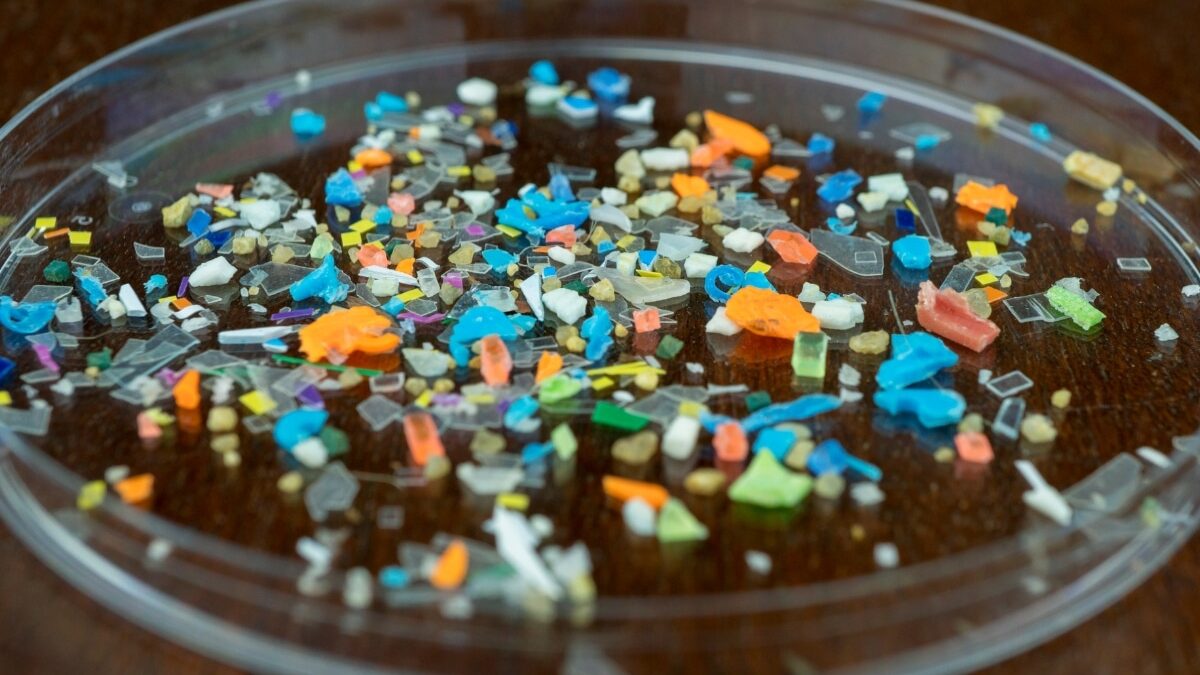A significant breakthrough in the fight against microplastic pollution has been announced by researchers from Wuhan University in China. A study published in the prestigious journal Science Advances revealed that a biodegradable sponge, made from squid bones and cotton, was able to remove up to 99.9% of microplastics in tests with various water samples. This discovery offers a promising and sustainable alternative to combat one of the greatest environmental challenges of today.
Microplastics, plastic particles smaller than 5 millimeters, are present in nearly every environment on Earth. They have been found at the summit of Mount Everest, in the depths of ocean trenches, in bottled water, human placentas, and even in breast milk. These tiny particles result from the degradation of larger plastic objects such as tires and packaging, as well as products that already contain microplastics in their formulation, like exfoliants and cosmetics.

A 2020 study estimated that around 14 million metric tons of microplastics accumulate on the ocean floor. These fragments threaten marine life, disrupt ecosystems, and pose risks to human health. The persistence of microplastics in the environment and the growing production of plastic make the issue even more alarming. Projections suggest that, despite global efforts to reduce plastic consumption, around 710 million metric tons will still be polluting the environment by 2040.
In addition to their ubiquity, microplastics can act as carriers for chemical pollutants, absorbing toxic substances like pesticides and heavy metals, which can be released into organisms that ingest these particles. Studies indicate that the ingestion of microplastics can cause inflammation, oxidative stress, and hormonal dysfunction in marine animals, with potential repercussions in the food chain and impacts on humans.
Seeking effective and affordable solutions, the Wuhan team developed a biodegradable sponge using chitin extracted from squid bones and cotton cellulose—both organic materials widely available and known for their filtration properties. Chitin, a polysaccharide found in crustaceans and mollusks, has excellent absorption capacity and antimicrobial properties, while cellulose contributes to the sponge’s porous structure, allowing greater contact area with the contaminated water.
In the tests conducted, the sponge was applied to four types of water samples: irrigation water, pond water, lake water, and seawater. The results were surprising: in all samples, the sponge successfully removed between 99% and 99.9% of microplastics. This level of efficiency significantly outperforms many traditional filtration methods.
The removal of microplastics occurs through two main mechanisms: physical interception, thanks to the sponge’s porosity, which traps larger particles, and electromagnetic attraction between the chitin fibers and the plastic particles, capturing smaller and harder-to-filter fragments. This combination allows the sponge to capture microplastics of different sizes and densities, including particles that typically escape conventional filtration systems.
One of the key differentiators of the developed sponge is its low production cost and the use of widely available materials. This contrasts with previously studied methods, which are often expensive, difficult to manufacture, and challenging to apply on a large scale. Additionally, the biodegradable nature of the sponge reduces the risk of generating new plastic waste during the filtration process.
Compared to other solutions, such as the synthetic starch and gelatin sponge developed by researchers in Qingdao last year, the new method stands out for its consistent efficiency in different water conditions. While the starch sponge showed variations in its effectiveness depending on the water’s salinity and turbidity, the squid bone sponge showed consistent results even in more contaminated waters.
Shima Ziajahromi, a professor at Griffith University in Australia and a microplastic expert, classified the method as “promising” and emphasized its potential to clean vulnerable aquatic ecosystems. “This is an innovative solution that could have a significant impact on mitigating microplastic pollution in aquatic environments,” she said.
However, challenges remain. Ziajahromi pointed out that the study did not address the sponge’s effectiveness in removing microplastics that sink into the sediment, which make up the majority of underwater plastic pollution. Additionally, even though biodegradable, the disposal of sponges saturated with microplastics needs to be carefully managed to avoid transferring pollutants from one ecosystem to another. “Although the material is biodegradable, the microplastics it absorbs need to be disposed of properly,” she warned.
The development of the squid bone sponge represents an important step forward in the search for practical and scalable solutions to address the microplastic crisis. However, the study’s authors themselves acknowledge that this innovation should be part of a broader set of strategies to combat plastic pollution.
Future research may explore ways to improve the sponge, increasing its absorption capacity and adapting it to capture sedimented microplastics. Furthermore, scientists are investigating ways to integrate these sponges into large-scale water treatment systems, such as wastewater treatment plants and industrial filtration systems.
Environmental organizations and governments also play a crucial role in implementing solutions like this. Financial incentives, stricter environmental regulations, and public awareness campaigns could accelerate the adoption of sustainable technologies and reduce excessive plastic consumption.
The researchers emphasize that, while the squid bone sponge represents a significant advance, reducing plastic production and consumption should remain the global priority. “The planet is under great threat from microplastics, and aquatic ecosystems are the first to suffer,” warn the study’s authors.
With plastic production expected to rise in the coming years, innovative solutions like this biodegradable sponge are essential to mitigate environmental impacts. But the key to solving the problem lies in the combination of technological innovations, effective public policies, and a shift in global consumption patterns.
In a scenario where microplastic pollution seems irreversible, every advance counts. The squid bone sponge emerges as a tangible hope to protect our oceans and aquatic ecosystems, promoting a cleaner, more sustainable future. If widely adopted and integrated with other conservation strategies, this innovation could make a significant difference in the fight against global plastic pollution.

